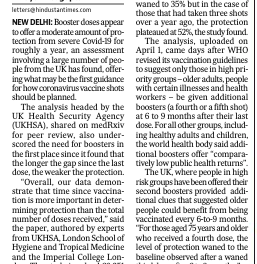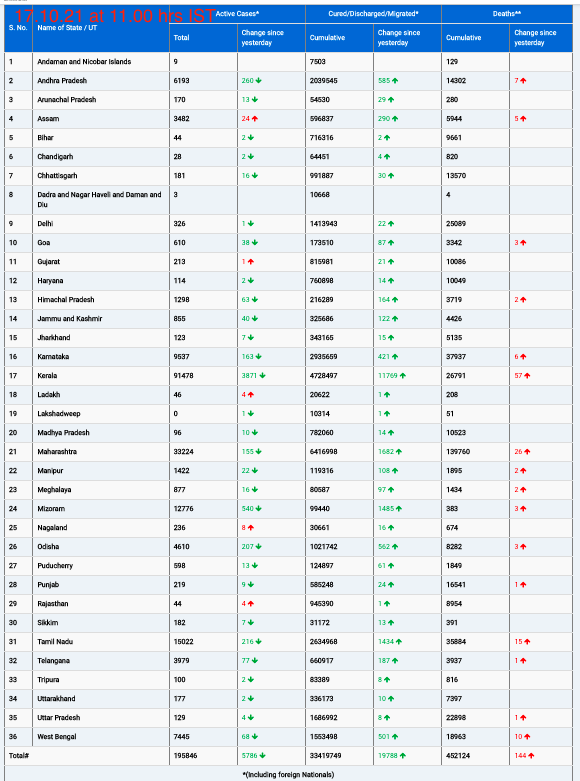The first 1,000 days of a child’s life—spanning from pregnancy to their second birthday—have long been recognized as a critical period for shaping a child’s health and development. However, new research is shedding light on a crucial follow-up period: the “next 1,000 days” from ages 2 to 5.
Recent findings published in The Lancet highlight that while the first 1,000 days have garnered significant attention for their impact on lifelong outcomes, the developmental window between ages 2 and 5 is just as vital for ensuring a child’s healthy growth, well-being, and future academic success. Experts argue that investments made in early childhood care and development during this time can continue to support children who may not have received optimal inputs in their earlier years, especially in the aftermath of disruptions like the COVID-19 pandemic.
As a public health specialist working alongside global experts, I had the privilege of leading a new series in The Lancet, aimed at unpacking the evidence about these next 1,000 days. This research series builds on previous studies conducted by The Lancet in 2007, 2011, and 2016, but now with a focus on the emerging needs of children aged 2 to 5, particularly in low- and middle-income countries.
Why the Next 1,000 Days Matter
During the ages of 2 to 5, children experience remarkable progress across a range of developmental domains, including cognitive abilities, emotional regulation, language skills, and physical coordination. These early years are foundational for school readiness and overall health throughout life. Development in this period is shaped by factors such as health, nutrition, responsive caregiving, and early learning environments, as well as exposure to violence and the mental health of caregivers.
Importantly, research shows that these developmental milestones are achieved more successfully when children receive nurturing care. This care spans five key areas: health, nutrition, responsive caregiving, safety and security, and early learning. These areas not only promote healthy development but also set the foundation for children’s future success in education and social functioning.
The Disparity Between High- and Low-Income Countries
The research reveals alarming disparities in the care provided to children during the next 1,000 days, particularly in low- and middle-income countries. A previous Lancet report highlighted that 250 million children under the age of 5 in these countries were at risk of not reaching their full developmental potential. More recent data shows that only 25% of 3- and 4-year-olds in these regions receive the necessary care to thrive. In sub-Saharan Africa, the figure drops dramatically to just 7.9%, underscoring the stark inequalities that persist globally.
Furthermore, fewer than one in three children in these regions have access to developmental stimulation, and only 39% are enrolled in early childhood education programs. The absence of these supports leaves millions of children vulnerable to developmental delays that could affect their academic performance and overall quality of life.
A Mismatch in Global Support
One of the striking findings from the series is that early childhood development programs, which are crucial during these formative years, are overwhelmingly concentrated in high-income, Western countries. About 44% of such programs are based in the United States, while only 5% of these initiatives are found in low- and lower-middle-income nations, where they are most urgently needed. This disparity points to a significant gap in research and program implementation that leaves a large portion of the world’s child population underserved.
Call for Action: Collaboration and Investment
The Lancet series advocates for a multi-sectoral approach to addressing these gaps. Experts urge the health, education, and social welfare sectors to work together in delivering high-quality, contextually relevant early childhood care programs. These programs should not only focus on risk mitigation, such as preventing violence, but also on enhancing protective factors that buffer children from harm, such as improving caregiver mental health and boosting parental involvement.
Equity is a central theme of the recommendations. To ensure that all children, especially the most vulnerable, receive the care they need, programs must be of equal quality and universally accessible.
A Smart Investment
Investing in early childhood care and education is not only a moral imperative but a sound economic decision. The cost of providing comprehensive care for all children in the next 1,000 days is relatively low—less than 1% of GDP in low- and middle-income countries. However, the potential benefits are substantial, with an estimated return of 8 to 19 times the cost, through improved health, education, and productivity in the long term.
As the world continues to grapple with the long-term effects of the pandemic and other global challenges, it is more urgent than ever to prioritize investments in early childhood development, particularly for the most disadvantaged. With the right policies, programs, and funding, we can ensure that all children, regardless of where they are born, have the chance to thrive in the next 1,000 days and beyond.











